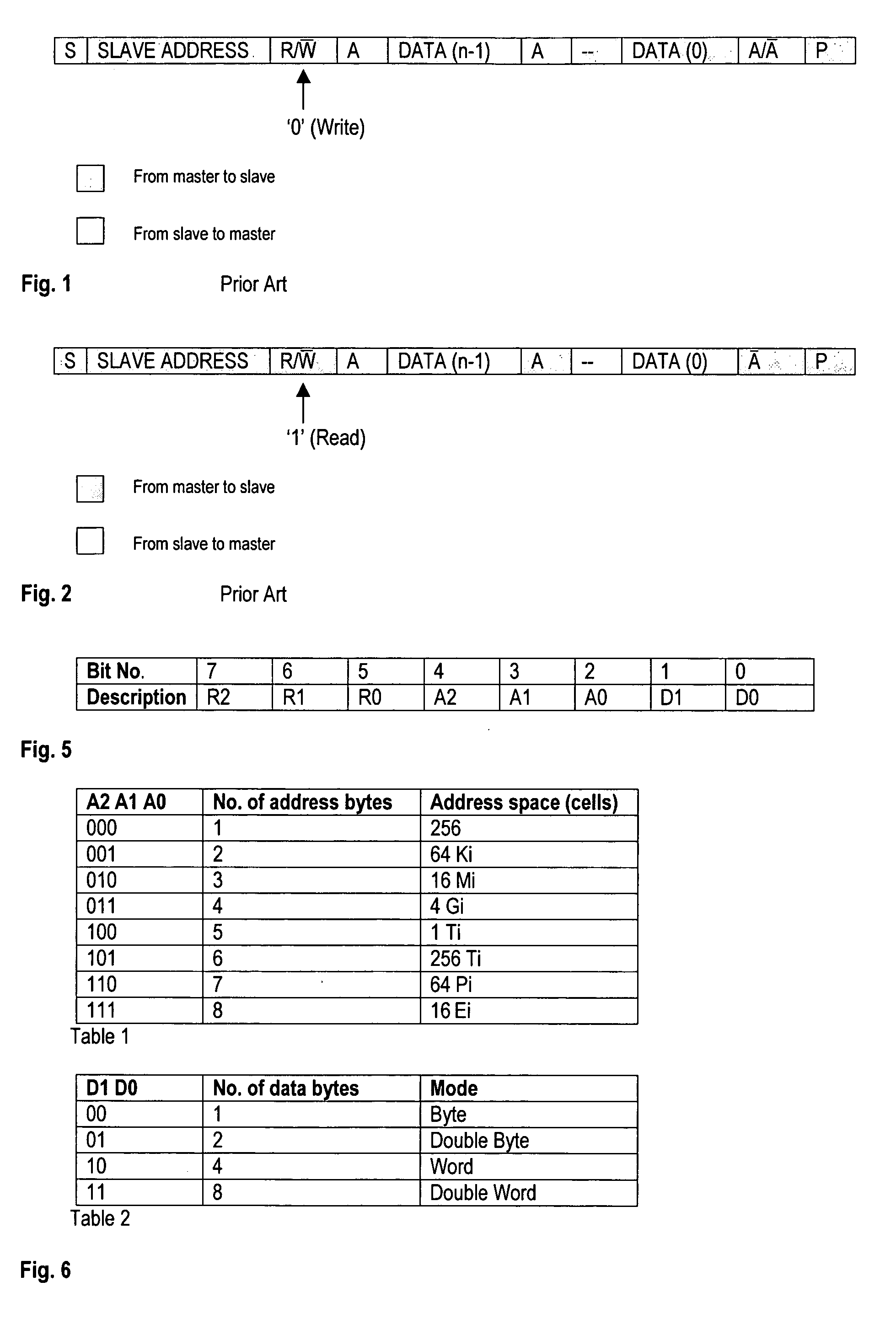Method and data structure for random access via a bus connection
- Summary
- Abstract
- Description
- Claims
- Application Information
AI Technical Summary
Benefits of technology
Problems solved by technology
Method used
Image
Examples
Embodiment Construction
[0021]FIG. 3 shows the data transfer scheme for a read operation according to the invention. A master device generates a START condition S and transmits a slave address with the R / {overscore (W)} bit set to ‘1’. After this, the master transmits a ‘Data Transfer Mode’ byte. The ‘Data Transfer Mode’ byte specifies the number of address bytes (m) that compose a memory cell address, and the number of data bytes (n) that compose the contents of each memory cell. Then, the master device continues the transfer by transmitting the announced number of ‘m’ address bytes. The slave device replies by sending the requested ‘n’ data bytes corresponding to that location. The transfer is terminated when the master device generates a STOP condition P. Like in a standard I2C bus connection, the acknowledge signal A is generated by the receiver, either master or slave, during the 9th clock pulse after a byte of data is received.
[0022] The data transfer scheme for a write operation according to the in...
PUM
 Login to View More
Login to View More Abstract
Description
Claims
Application Information
 Login to View More
Login to View More - R&D Engineer
- R&D Manager
- IP Professional
- Industry Leading Data Capabilities
- Powerful AI technology
- Patent DNA Extraction
Browse by: Latest US Patents, China's latest patents, Technical Efficacy Thesaurus, Application Domain, Technology Topic, Popular Technical Reports.
© 2024 PatSnap. All rights reserved.Legal|Privacy policy|Modern Slavery Act Transparency Statement|Sitemap|About US| Contact US: help@patsnap.com










